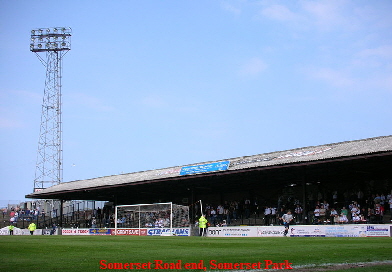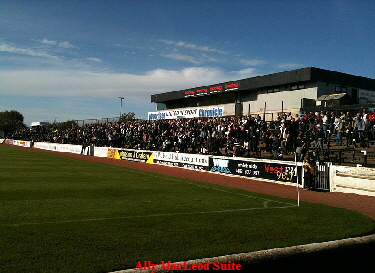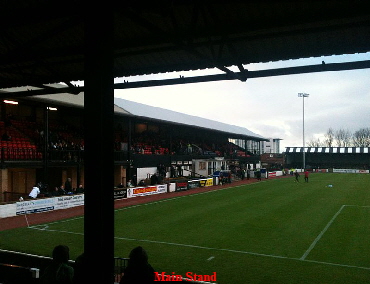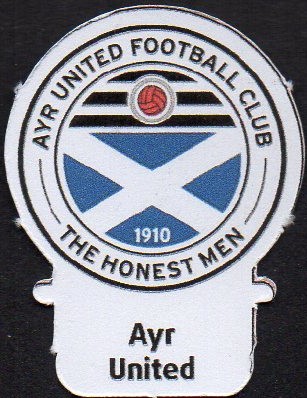
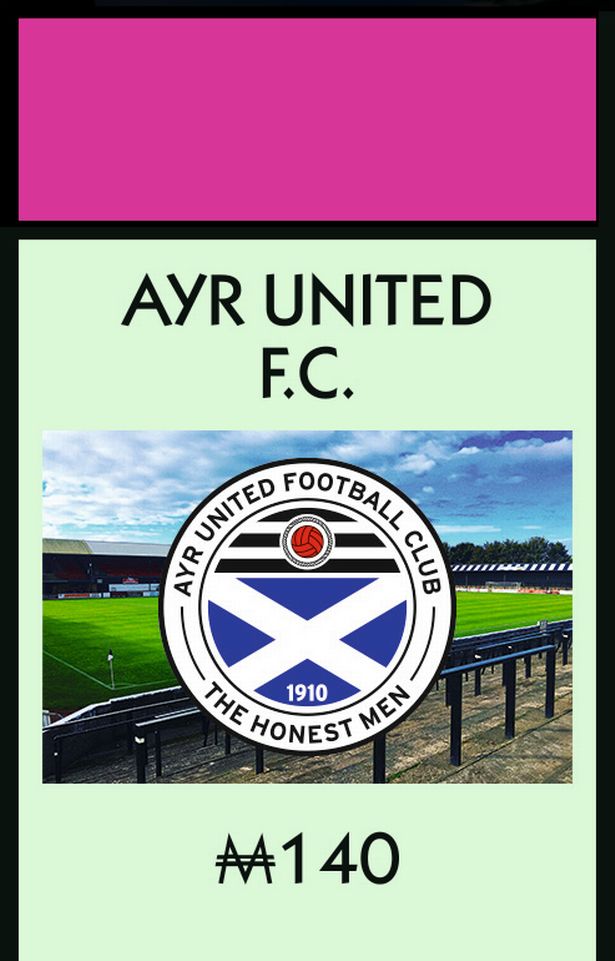

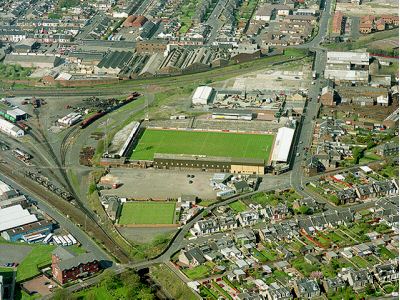





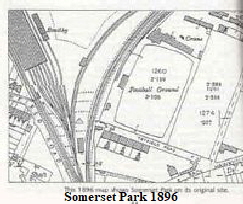 Somerset Park, the home of Ayr United Football club has not always looked the way it does today. The football stadium has been the home of Ayr United since they were founded in 1910. Prior to that, it was the home ground of Ayr FC, who merged with Ayr Parkhouse to form Ayr United.
Somerset Park, the home of Ayr United Football club has not always looked the way it does today. The football stadium has been the home of Ayr United since they were founded in 1910. Prior to that, it was the home ground of Ayr FC, who merged with Ayr Parkhouse to form Ayr United.
Ayr FC commissioned Somerset Park in 1888 to replace Beresford Park. They needed an alternative venue for a friendly match against Aston Villa because Beresford Park was being used for the Ayr Cattle Show at the time. The Beresford Park clubhouse and grandstand were dismantled and reassembled at Somerset Park. Ayr entered the Scottish Football League in 1897, but failed to seriously challenge for promotion to the First Division. Ayr Parkhouse, who played at Beresford Park, subsequently joined the league, but were also stuck in the Second Division. The two clubs decided to merge in 1910 to form Ayr United and the new club adopted Somerset Park as its primary home, although Beresford Park was used during the First World War.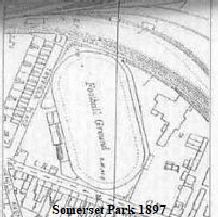
Ayr United bought Somerset Park for £2,500 in 1920. The current Main Stand was designed by Glaswegian architect, Archibald Leitch, famous for his work designing Hampden Park, Stamford Bridge, White Hart Lane, Goodison Park, Ibrox Stadium, Selhurst Park, Tynecastle, Highbury Stadium and Craven Cottage, at the cost of £8,000.
Four years later, the direction of the pitch was changed when the club built a new Main Stand. A roof was built in 1933 over the railway end terrace, which was split into male and female sections (see picture, left, of Somerset Park in 1896). In 1896, between the months of March and April Somerset Park was closed for a transformation which would provide much needed improvments to the ground. Most of it was to improve athletics provision at Somerset.
The result was the larger football ground and tarmacadam running track around it. This change placed the park at an angle to Tryfield Place,. Completed in 1897, this alignment remained until the park was again re-aligned in 1924 to run parallel to Tryfield Place.
Parts of the turf were re-laid and the new stand was built. On completion, the stand extended 187 feet with 600 'tip up' chairs in the centre section with a further 745 between the two wings of the structure. The Railway End, which now houses only away supporters, is a covered 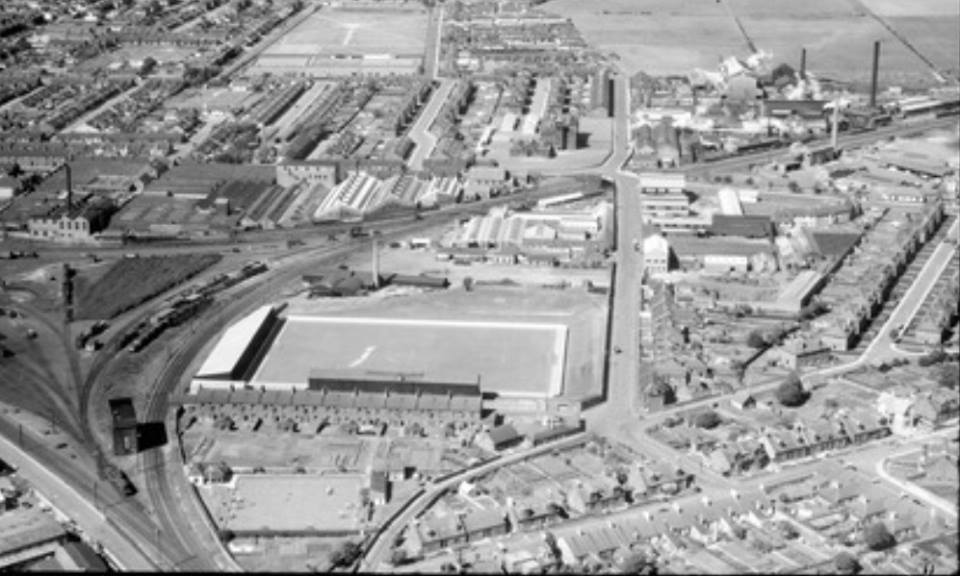 terrace opened in September 1933, following a £230 donation from the supporters club and £120 from the ladies supporters club. In 2012, the club totally re-roofed the Railway End.
terrace opened in September 1933, following a £230 donation from the supporters club and £120 from the ladies supporters club. In 2012, the club totally re-roofed the Railway End.
The biggest crowd ever to attend a match at Somerset Park was on 13th September 1969 when 25,225 people watched a match against Rangers.
The ground remained almost unchanged until 1970 when floodlights were installed giving the club much needed flexibility in staging evening matches. Funding was raised when supporters raised £12,201:14s:11d towards the £18,000 that was required. The first floodlight game at Somerset Park was a Second XI match against Partick Thistle although they were not officially opened until 18 November 1970, when Ayr United beat Newcastle United 2-0 in a ceremonial match for the occasion. In 2011, the original lights had to be replaced, which caused a Challenge Cup match against Raith Rovers to be switched to Greenock Morton's Cappielow Park, Ayr United won 3-0
In 1971, Ayr United F.C. erected a roof to cover the Somerset Road End terrace at the cost £12,000. To celebrate the construction of the new roof, Ayr United invited English club, Sunderland, the final result was a 1-1 draw.
In 1989, an extension to the main stand was added to contain an extra 600 seats and contains a disabled section. The current seating capacity of Somerset Park is 1,597.
In the early 1990's an extension to the main stand was made at the corner of Tryfield Place and Somerset Road. This stand became a family 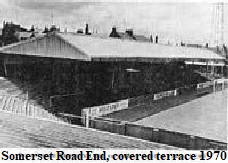 stand and incorporated at the lower level, an adequate place for wheelchair supporters to be housed.
stand and incorporated at the lower level, an adequate place for wheelchair supporters to be housed.
The Taylor report and the coming of Bill Barr, (property developer) as owner enhanced speculation about re-furbishment of Somerset park or indeed a move to a new all seater stadium. Additional makeshift VIp boxes were erected across from the main Tryfield Place stand.
The ground capacity at Somerset Park at this stage was reduced to 12,128. The main stand extension was the last major development at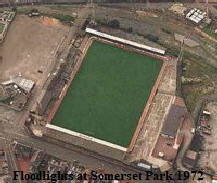 Somerset Park.
Somerset Park.
The North Terrace is an open terrace, for both home and away supporters, with a segregation fence erected in 1980. There is currently a hospitality suite standing on the north terrace that opened in 1996 and is currently named the "Ally MacLeod Hospitality Suite sponsored by the Ayrshire Post ", which replaced the traditional score board in its place. Each box is named after a club great from either the 1960s, 1970's or 1980's, they are: Quinton 'Cutty' Young, Stan Quinn, Henry Templeton, Davie Stewart and John 'Spud' Murphy
Scottish Premier League rules dictated that clubs entering that league had to have at least 10,000 seats. Somerset Park contains only 3,500 seats.
During the 1990s and early 2000s, Ayr United were owned by Bill Barr, whose Barr Construction company built new stands for several clubs, including Kilmarnock, Hibernian, St Mirren, Stranraer and Airdrie. Despite this work on other Scottish grounds and English grounds such as St Mary’s in Southampton, Somerset Park was not developed, which meant that Ayr United could not be promoted to the Scottish Premier League
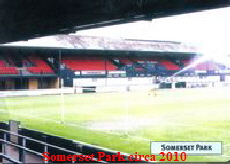 Bill Barr put forward plans for a new stadium but South Ayrshire District Council raised objections to the proposed development because it included an out of town shopping complex. The local council finally gave in to the proposal and approved in late 2001.
Bill Barr put forward plans for a new stadium but South Ayrshire District Council raised objections to the proposed development because it included an out of town shopping complex. The local council finally gave in to the proposal and approved in late 2001.
Ayr’s joy was short-lived as the Scottish Executive called the planning project in and after many months - and years of deliberation - vetoed Ayr’s stadium plans.
In June 2004 the situation was eased with the Scottish Premier League reducing the ground restrictions to only 6,000 seats and even gave the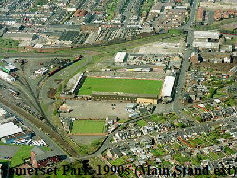 green light to ground sharing agreements for clubs that did not have a stadium to that standard.
green light to ground sharing agreements for clubs that did not have a stadium to that standard.
In November 2006, Ayr United publicised plans to sell Somerset Park to housing developer Barratt Homes and move to a new purpose built stadium in the Heathfield area of Ayr. The new ground was planned to consist of a single stand of 3,650 seats, with the potential to add another 3,000-seat stand and a 1,000-capacity terrace, giving a total potential capacity of 7,650.
South Ayrshire Council gave outline planning permission in January 2008. Barratt Homes pulled out of the deal to purchase Somerset Park in August 2008, however, with the developer claiming that the planning rules were "unworkable". The credit crunch, which depressed housing values, also affected the proposal's viability.
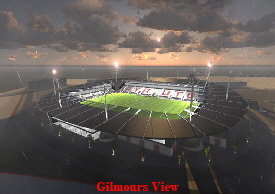 The Main Stand roof was damaged by Hurricane ‘Bawbag’ in December 2011 as was the covered terracing roof which had to be totally rebuilt forcing Ayr United to postpone a First Division match against Ross County. The club were forced into further work upon the Main Stand, removing the remaining concrete asbestos tiles on the roof and upgrading the kitchen facilities.
The Main Stand roof was damaged by Hurricane ‘Bawbag’ in December 2011 as was the covered terracing roof which had to be totally rebuilt forcing Ayr United to postpone a First Division match against Ross County. The club were forced into further work upon the Main Stand, removing the remaining concrete asbestos tiles on the roof and upgrading the kitchen facilities.
In 2014 property financier Brian Gilmour outlined a £45million blueprint to make struggling Ayr United a Premiership force in six years.
Glasgow-based Gilmour, pursued plans for a new 10,000-seat stadium, housing and entertainment village, delivering an estimated 900 jobs and ploughing over £100million into the local economy. Current owner Lachlan Cameron confirmed discussions with Brian Gilmour, but finally the plan fell through.
The club are still waiting to re-develop Somerset Park.
